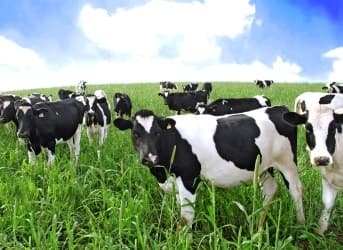In what is being heralded as the most comprehensive study on livestock’s contribution to global warming to date, the UN’s Food and Agriculture Organization (FAO) once again pins the lion’s share of greenhouse gas emissions on flatulent cows.
In a new study, the FAO said that livestock farming makes up 14.5% of all human-caused greenhouse gas emissions, claiming that the report is the most comprehensive estimate made to-date of livestock's contribution to global warming.
In the similar report from 2006, which provoked much controversy, the FAO said global meat production was responsible for 18% of greenhouse gas emissions—more than all of the world's cars, trains and planes combined.
The organization said that methane from livestock every year was equivalent to around 144 million tons of oil, proposing solutions like breeding less-flatulent types of cows.
Related article: Turn Your Leftovers into Energy
The biggest source of emissions was in feed production and processing--around 45% of the total--while animal gases accounted for around 39%.
The emissions associated with livestock added up to seven gigatons of carbon dioxide equivalent per year--or 14.5% of all human-caused greenhouse releases.
“Furthermore, livestock are a major driver of the global trends in land-use and land-use change including deforestation (conversion of forest to pasture and cropland), desertification, as well as the release of carbon from cultivated soils. The overall contribution of CO2 emissions from the livestock sector are estimated at 2.7 billion tonnes of CO2,” the report notes.
Ren Wang, FAO's assistant director for agriculture and consumer protection, said that the new findings showed that the potential to improve the sector's environmental performance is significant.
Wang said it was "imperative" to act now to reduce emissions from the sector since world demand for meat and dairy was rising rapidly, particularly in emerging markets.
Related article: The Evolution of the Climate Debate: Business vs Business
Existing methods, including changing animal diets and growing animal feed more efficiently, could reduce emissions by up to 30%.
“Better-quality feed, improved breeding and good animal health helped to shrink the unproductive part of the herd,” the report said.
ADVERTISEMENT
The greatest potential for cuts in emissions is in low-productivity livestock systems in south Asia, Latin America and Africa.
However, in Europe and the US, where emission intensities are relatively low but the overall volume of production and therefore emissions is high, the report said even small decreases in intensity could add up to significant gains.
By. Joao Peixe of Oilprice.com


















